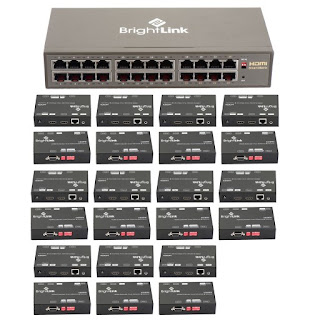Have Too Many Sources or Too Many Displays in Your Video Distribution Network? Take A Look at The BL-32-32-MATRIX

If you've been trying to set up a video distribution network for a large sports bar, bowling alley, or other business that requires a high number of sources and monitors, you may have run into the problem of how to find an HDBaseT matrix with enough inputs and outputs. Most HDBaseT systems only allow up to eight sources to be distributed to eight monitors. If you have 15, 20, or even 30 sources and monitors, this kind of system won't work. One way to solve this problem would be to have multiple matrices in the system. But this would make the system very difficult to control. So what should you do? The BL-32-32-MATRIX may be exactly the solution you've been looking for. The BL-32-32-MATRIX is not an HDBaseT component. Instead, it uses ordinary HDMI cable to distribute up to 32 video sources to up to 32 different television monitors. Normally, the fact that this device uses HDMI instead of HDBaseT would be a drawback, since it would prevent the device f...
